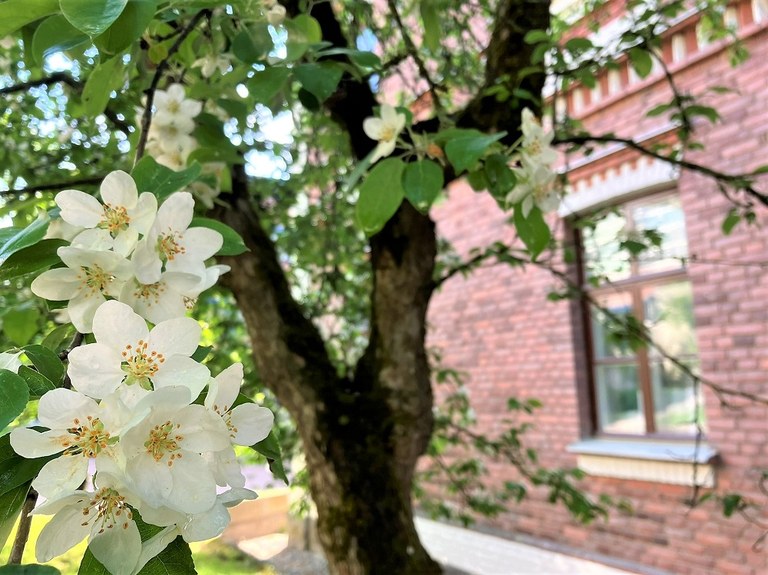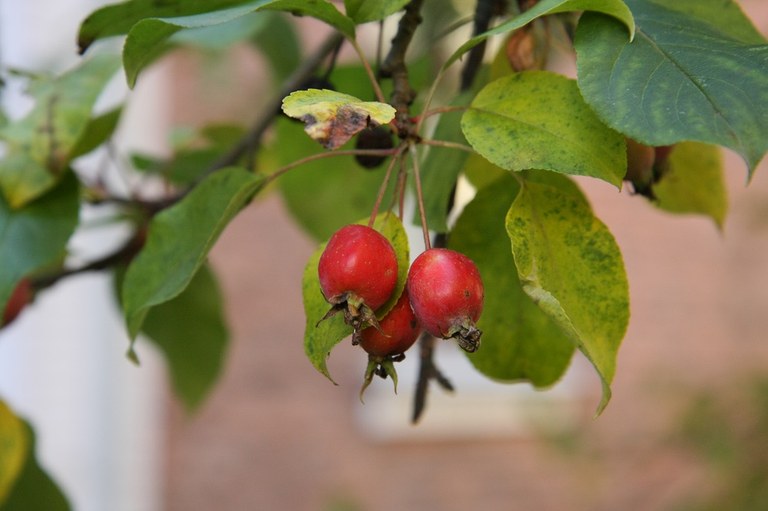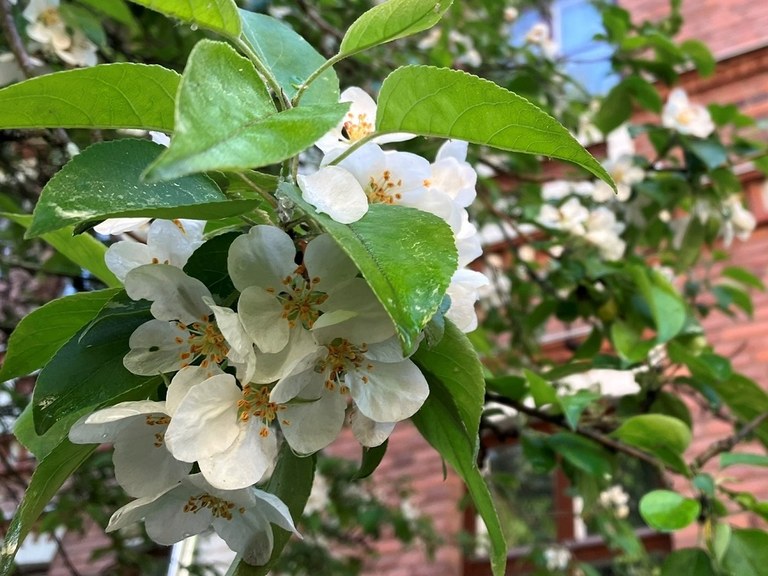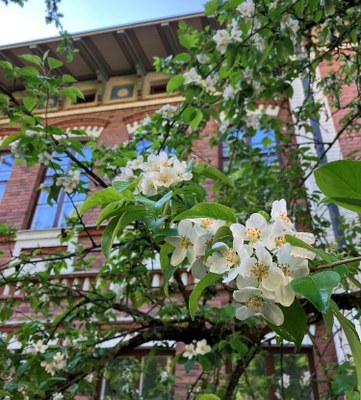'Oppio' - Chinese crab-apple is the official plant of the JYU botanic garden
On the northwestern side of the Oppio Building on Seminaarinmäki, there are two Chinese crab-apple trees (Malus prunifolia). The trees were planted in the 1930s, which is about all the background information still left regarding these trees. These old Chinese crab-apples growing next to the O building (also known as Oppio) have proven to be particularly hardy plants, surviving through the cold months of the Winter War in 1939–40 and also the coldest winter of the 20th century in 1986–87.
In contrast to other Chinese crab-apple populations, this particular population growing on the campus areas of JYU received the name ‘Oppio’ in 1995 when Senior Researcher Marjatta Uosukainen, the director of the Laukaa-based research station of the Agricultural Research Centre, introduced the Oppio Chinese crab-apple in the Flora Day festivities at the University. The Oppio thus became the official plant of the JYU Botanic Garden, also known later as the University’s own “Tree of Knowledge”.
The Laukaa-based research station chose the Oppio for a cell duplication process through which new young and healthy seedlings could be cloned from the old trees. The process was initiated by Mikko and Terttu Raatikainen. Professor Mikko Raatikainen was the director of the science department of Jyväskylä University Museum and later, until 1995, the director of the whole museum and the instigator of the JYU Botanic Garden. On 10 May 2000, Jyväskylä Garden Association and Dendrology Club planted a new Oppio tree next to the old ones by the O building, as a memorial to Mikko Raatikainen.

A number of younger Oppios have also been planted around the walkways between the buildings designed by Arto Sipinen. The Botanic Garden also sold and donated these seedlings in the 1990s and 2000s, meaning Oppio trees can now be found in the yards of many former and present university staff members, in particular. If one wished to buy an Oppio for one’s own home yard or as a gift in wintertime, so-called Oppio options were on sale, by which one could then purchase a seedling in the next spring. The last cloned Oppios from the former Laukaa-based research station have been planted in Aalto Park.

The Chinese crab-apple is an ornamental apple tree that bears small fruit. There are many known cultivated forms and varieties of this plant species. Chinese crab-apple has been cultivated as an ornamental tree in western Europe for over 200 years, but its country of origin remains ambiguous. Oppio flowers are white and about 3 to 4 cm in diameter. Its fruit develop from an orange shade to a deep dark red colour, to a size of about 2.5 to 3 cm. The fruit is edible, and an ample harvest can be used as puree, for example.

The Oppio grows in a narrow fashion and starts blossoming already as a young, whip-like sprout. The leaves are dark and fairly shiny, taking on a strong yellow hue in autumn. Depending on where it’s growing, it achieves a full height within the range of 5 to 10 metres. Abundant blooms usually appear at the end of May. The flowers are densely located and covering nearly the whole tree. It grows best in a sunny or half-shaded spot with rich but porous soil.
The Oppio grows successfully at least in zones I to IV (V). In the 2020s, this variety has become available occasionally in some nurseries, grafted onto a basic stem. The Botanic Garden has no plant production of its own.
WELCOME TO THE JYU BOTANICAL GARDEN!
The outdoor areas are open for everyone at all times, and you can find plant name plates especially on Seminaarinmäki and in Aalto Park.
View or print a map from here for a self-guided tour in the Seminaarinmäki garden.
Starting address: Seminaarinkatu 15, 40100 Jyväskylä.

